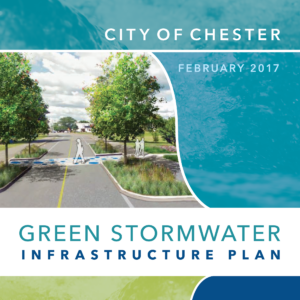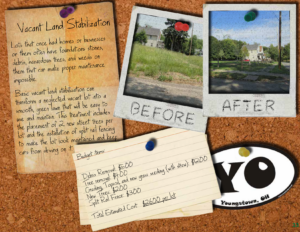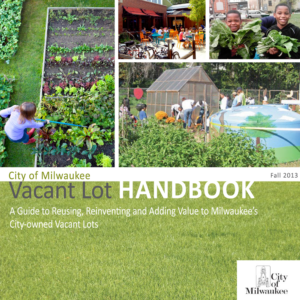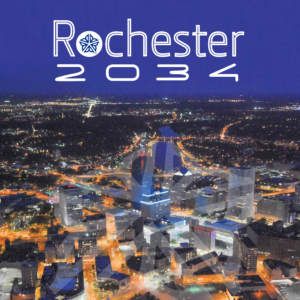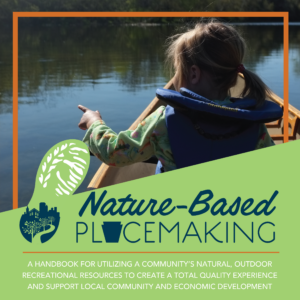Vacant Land Elements Examples
Vacant land stewardship requires four fundamental elements: knowing your community’s context, having clear goals and plans, committing to collaboration, and enacting facilitative policies. These four elements will look different in every community, but they are all critical components of implementing successful vacant land stewardship. To learn more about these elements and discover some next steps for your community's learning journey, explore the element examples below.
Element Type
Organization
Heartland Conservation Alliance
This mapping tool is designed to help prioritize the vacant lots that can have the most environmental and health benefits for urban communities. The tool provides parcel specific information and important contextual information like if it is in a flood…
Read More »City of Flint
The repurposing of vacant properties is a central component of Imagine Flint. Recognizing that some areas of Flint cannot continue to exist as they do today, Flint residents have chosen to adapt and transform their neighborhoods and commercial corridors into…
Read More »City of Gary
The Gary Green Infrastructure Plan is a city-wide framework for green infrastructure. The plan integrates with broader land use planning and redevelopment efforts and details existing conditions. Importantly, it provides tools, strategies, and recommendations for project prioritization and discusses management,…
Read More »Detroit Future City
The Field Guide to Working with Lots provides step-by-step instruction for 38 landscape designs on vacant lots.
Read More »City of Chester
The City of Chester Green Stormwater Infrastructure (GSI) Plan provides a framework to manage stormwater with methods that contribute to safe, attractive, and more resilient neighborhoods and complements the City’s Climate Adaptation Plan.
Read More »Youngstown Neighborhood Development Corporation
The Youngstown Neighborhood Development Corporation (YNDC) has produced a number of planning resources and guides to assist neighborhood groups with grassroots efforts to stabilize neighborhoods.
Read More »University of Missouri Extension, Division of Applied Social Sciences
This report provides an overview of urban agriculture and local food system resources and practices across the United States and parts of Canada, with a primary emphasis on providing resources that can encourage and support urban agriculture in Missouri’s metropolitan areas.
Read More »City of Milwaukee Department of City Development
With the help of many dedicated citizens and professionals, the Department of City Development in Milwaukee has put together a handbook of creative reuse strategies for city-owned vacant land.
Read More »City of Rochester
Rochester 2034 is a 15-year comprehensive plan to improve the community. Rochester’s population losses over the last several decades have left a legacy of vacancy – an urban challenge common to Rust Belt cities. Key takeaways in this work note that half of the vacant parcels in Rochester are owned by the City; all City-owned vacant lots are maintained at a ‘clean and green’ standard that exceeds many other cities…
Read More »PA Department of Conservation and Natural Resources and PA Downtown Center
Developed through a partnership between the Pennsylvania Department of Conservation and Natural Resources and the Pennsylvania Downtown Center this handbook provides strategies for communities to utilize their natural, outdoor recreational resources as assets to grow and enhance their community and economic development.
Read More »Heartland Conservation Alliance
This mapping tool is designed to help prioritize the vacant lots that can have the most environmental and health benefits for urban communities. The tool provides parcel specific information and important contextual information like if it is in a flood…
Read More »City of Flint
The repurposing of vacant properties is a central component of Imagine Flint. Recognizing that some areas of Flint cannot continue to exist as they do today, Flint residents have chosen to adapt and transform their neighborhoods and commercial corridors into…
Read More »City of Gary
The Gary Green Infrastructure Plan is a city-wide framework for green infrastructure. The plan integrates with broader land use planning and redevelopment efforts and details existing conditions. Importantly, it provides tools, strategies, and recommendations for project prioritization and discusses management,…
Read More »Detroit Future City
The Field Guide to Working with Lots provides step-by-step instruction for 38 landscape designs on vacant lots.
Read More »City of Chester
The City of Chester Green Stormwater Infrastructure (GSI) Plan provides a framework to manage stormwater with methods that contribute to safe, attractive, and more resilient neighborhoods and complements the City’s Climate Adaptation Plan.
Read More »Youngstown Neighborhood Development Corporation
The Youngstown Neighborhood Development Corporation (YNDC) has produced a number of planning resources and guides to assist neighborhood groups with grassroots efforts to stabilize neighborhoods.
Read More »University of Missouri Extension, Division of Applied Social Sciences
This report provides an overview of urban agriculture and local food system resources and practices across the United States and parts of Canada, with a primary emphasis on providing resources that can encourage and support urban agriculture in Missouri’s metropolitan areas.
Read More »City of Milwaukee Department of City Development
With the help of many dedicated citizens and professionals, the Department of City Development in Milwaukee has put together a handbook of creative reuse strategies for city-owned vacant land.
Read More »City of Rochester
Rochester 2034 is a 15-year comprehensive plan to improve the community. Rochester’s population losses over the last several decades have left a legacy of vacancy – an urban challenge common to Rust Belt cities. Key takeaways in this work note that half of the vacant parcels in Rochester are owned by the City; all City-owned vacant lots are maintained at a ‘clean and green’ standard that exceeds many other cities…
Read More »PA Department of Conservation and Natural Resources and PA Downtown Center
Developed through a partnership between the Pennsylvania Department of Conservation and Natural Resources and the Pennsylvania Downtown Center this handbook provides strategies for communities to utilize their natural, outdoor recreational resources as assets to grow and enhance their community and economic development.
Read More »




